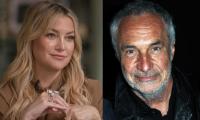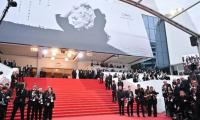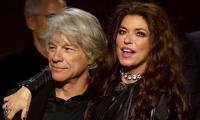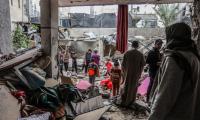This is not a parody of the 'Naya Pakistan' slogan that has morphed into a razor-sharp cliché. Long before the PTI or even Pakistan was born, we had envisioned 'Naya Kashmir'.
The document was produced by the erstwhile Jammu and Kashmir’s leading political party National Conference (NC) headed by Sheikh Abdullah who presented it to Maharaja Hari Singh in 1944. It envisaged an independent, democratic and constitutional monarchy that promised uniform rights to its citizens and afforded equitable opportunities to women. The document was ahead of its time and had a strong Lahore connection. It was conceived by BPL Bedi, who lived in the city along with his English wife Freda, parents to acclaimed Bollywood actor Kabir Bedi. The Bedis were strong Leftists; Lahore had quite a considerable number of them with strong intellectual reach and influence across undivided India.
Although the Naya Kashmir document was a rip-off of the 1936 constitution of the Soviet Union also known as the Stalin Constitution, it is considered as the ‘most important political document in modern Kashmir’s history’. Under Jawaharlal Nehru’s influence and guidance, Sheikh Abdullah rescinded his dreams for an independent country and joined India. This ended the autocratic rule of Maharaja Hari Singh who appointed Abdullah as head of the emergency administration. Abdullah used the slogan of Naya Kashmir to cement his position as the undisputed new leader receiving support from Indian leaders like Jawaharlal Nehru and his daughter Indira Gandhi. He was able to deliver on some of his promises such as agrarian and land reforms that lifted millions out of poverty, mainly Kashmiri Muslims who had choked under the stranglehold of Hindu landlords for centuries.
This increased Abdullah’s clout but his control over the masses was mainly realised through the display of raw power wherein he incarcerated thousands in prisons, and threatened and attacked thousands more forcing them to flee. Those who did not yield to his violent machinations were forcibly exiled to Pakistan or Azad Jammu and Kashmir. Even Pandit Prem Nath Bazaz, Abdullah’s one-time associate had to live in New Delhi after 1947 for Abdullah was unwilling to accept any challenge or opposition.
For the rest of his life, Abdullah used the slogan and legacy of Naya Kashmir to concentrate power that was transferred to his son, Farooq Abdullah, and later his grandson, Omar Abdullah. Every one of the Abdullahs continued to promise a Naya Kashmir. Though the concept had lost both its mooring and meaning, it continued to feed the NC’s narrative to kindle undefined hopes and unrealistic expectations. Earlier in June this year, I paid a short visit to Mujahid Manzil, the National Conference party headquarters in Srinagar, to gain insights about the current iteration of Naya Kashmir. Everyone looked confused but this did not stop them from talking about it with reverence for some mystical nostalgia.
Nearly four decades after his burial in one of the most spectacular funerals in Kashmir’s modern history, Sheikh Abdullah’s recent anniversaries – both birth and death – passed uneventfully. In a reversal of times, the siege that followed the abrogation of Article 370, the New Delhi administration removed the security siege around his mausoleum that was installed in early 1990 to save it from desecration as many Kashmiris had publicly sworn to dig him out and feed his bones to the dogs. This anger against the person who once led his people and assumed the title of Sher-e-Kashmir or Kashmir’s lion is not without reason. The Kashmiris hold him responsible for the region’s accession with India that has inaugurated an era of unending afflictions that continually blights them.
In the post-1987 renewal of Kashmiri aspirations for Azadi, Abdullah is largely seen as a villain. His legacy as a pro-India Kashmiri icon was largely secured thanks to the Indian government efforts of retaining his family in power. This was secured largely through questionable electoral exercises that were manipulated by a plethora of security agencies to skilfully manufacture and manage the Kashmiri consent. Following Sheikh’s trajectory, the junior Abdullahs willingly played their own part for they had grown accustomed to New Delhi’s patronage without which they knew there was no route to power.
Much to their chagrin, the Indian security establishment later created a parallel in form of Mufti Sayeed and his daughter Mehbooba Mufti – both of whom were also awarded chief ministerial positions in lieu of their services to further compromise Kashmir’s tattered leftovers of autonomy. Besides, the Muftis paved the way for Hindutva’s ingress into the valley.
In the last over four months of the continued siege, Abdullah’s tomb got its traditional military-style siege back on only two occasions – his death centennial on September 8 followed by his birth anniversary on December 5. This was not to prevent any throngs of the public from the venue that had stopped well over three decades back. It was to enforce a blockade within the wider siege to thwart any attempts by family members or remnants of the National Conference from commemorating the event, even if symbolically.
Soon after the abrogation of Article 370 that followed the worst ever siege that continues to hold sway, Prime Minister Narendra Modi made his own promise to build a Naya Kashmir that, like the old document, promised enhanced development, progress and economic affluence. However, the new iteration of Naya Kashmir does not accept memorialising any form of Kashmir’s Muslim identity, even the one that is associated with pro-India aspiration. That is why on September 8 and now as recently as December 5, Sheikh Abdullah’s tomb on the banks of Dal lake near Hazratbal was not only sealed but all roads leading to it were blocked by groups of armed military men who had barricaded the roads with razor-edged spools of concertina wire.
In Modi’s Naya Kashmir, there is no space for Sheikh Abdullah and his Naya Kashmir that was conceived to be a secular and inclusive doctrine.
Twitter: @murtaza_shibli
Approximately one in three women worldwide has experienced either physical and/or sexual intimate partner violence ...
Prime Minister Shehbaz Sharif has laid the foundation of a Daanish school in Islamabad’s Kuri Village
Ahfaz-ur-Rahman was also an Urdu poet of considerable reputation with his poems concerning a wide range of political...
In this picture taken on April 16, 2023, people throng a market area during shopping in Lahore. — AFPCare to cast...
A representational image of a transmission tower, also known as an electricity pylon. — AFP/FileLower electricity...
Pakistan's third Governor General Ghulam Muhammad. — National Portrait Gallery website/FileAs discussed in the...







